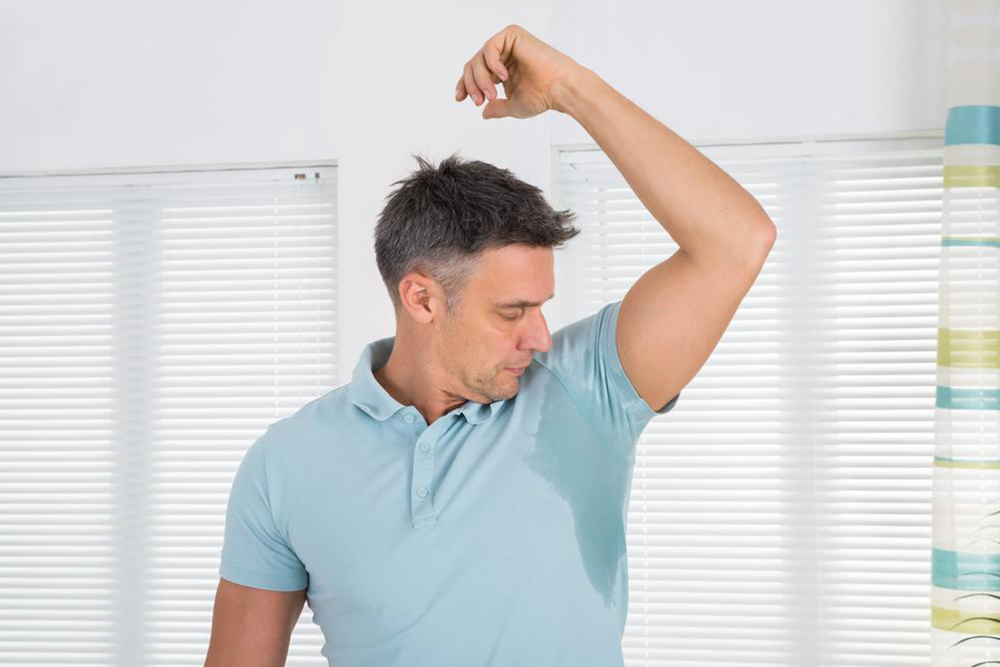An overview of hyperhidrosis
Hyperhidrosis is a condition in which patients sweat excessively. It is estimated that about 3% of Americans suffer from this condition. The condition is also known as polyhidrosis or seborrhea.
Depending on the source that causes the problem, hyperhidrosis is classified as Primary, Idiopathic, or Focal hyperhidrosis. There is apparently no known cause for the condition.

Primary Hyperhidrosis
Primary hyperhidrosis is more a matter of discomfort and not much of medical significance. If the sweating is very high it becomes a social problem and causes embarrassment, because it stains the clothes and complicates social, business, and workplace interactions. Axillary hyperhidrosis generally begins with adolescence while palmoplantar generally starts earlier. A bacterial infection complicates matter by creating a foul odor.
-The initial treatment is using over the counter antiperspirants which contain low doses of aluminum salts. They are usually easily available and usually of low cost. Prescription antiperspirants contain aluminum chloride hexahydrate.
– The next is Iontophoresis. This device passes ionized tap water through skin using direct current.
– A technique called miraDry permanently kills the sweat glands using microwave energy and more information can be go after consulting with your doctor.
– In some extreme cases lasers are used to kill the sweat glands in the underarm area.
Secondary Hyperhidrosis
This is a condition where in hyperhidrosis is a symptom rather than being the primary disease and it affects the entire body and is not localized. Some of the causes are alcohol abuse, anxiety, diabetes, gout, heart diseases, spinal injury, obesity, Parkinson’s disease, hyperthyroidism and many others. Some medicines and substance abuse can also cause this condition. The long-term complications of Secondary Hyperhidrosis are fungal and bacterial nail and skin infections, warts, emotional and psychological disturbances, loss of self-confidence etc. Diagnosis, to a large extent, depends on the patient’s history and how his/her body responds to the medicines.
Treatment consists of giving the patient palliatives like antiperspirant underarm pads, etc. Sometimes encouraging them to keep a change of clothes for dress, socks shoe etc. can also help.











